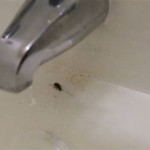Insulated Ducting For Bathroom Fan
When it comes to bathroom ventilation, insulated ducting is a vital component that often gets overlooked. It plays a crucial role in ensuring proper airflow, preventing condensation, and reducing noise levels. Here's why you should consider using insulated ducting for your bathroom fan:
Benefits of Insulated Ducting
Improved Airflow: Insulated ducting is designed to minimize airflow resistance, allowing the fan to operate more efficiently. The insulation helps to maintain a consistent air temperature throughout the duct, preventing warm air from cooling down and causing condensation.
Condensation Prevention: Condensation occurs when warm, moist air comes into contact with a cold surface. Uninsulated ducting can cause condensation to form inside the duct, leading to mold and mildew growth. Insulated ducting prevents this by maintaining a warm air temperature, reducing the risk of condensation.
Noise Reduction: The insulation in the ducting acts as a sound barrier, absorbing and dampening noise produced by the fan. This results in a quieter and more comfortable bathroom environment.
Energy Efficiency: Insulated ducting helps to maintain a consistent air temperature, reducing the load on the fan motor. This can lead to energy savings, as the fan will not have to work as hard to move the air.
Durability: Insulated ducting is typically made from durable materials such as aluminum or plastic, which are resistant to corrosion and wear. This ensures a long lifespan and reduces the need for frequent replacements.
Choosing Insulated Ducting
When choosing insulated ducting, consider the following factors:
Diameter: The diameter of the ducting should match the size of the bathroom fan outlet. Common diameters include 4 inches, 6 inches, and 8 inches.
Length: The length of the ducting will depend on the distance between the fan and the exterior vent. Choose a length that is slightly longer than the actual distance to allow for bends and turns.
Insulation Thickness: The thicker the insulation, the better the performance. Look for ducting with a minimum insulation thickness of R-5.
Material: Aluminum and plastic are the most commonly used materials for insulated ducting. Aluminum is more durable and resistant to corrosion, while plastic is more flexible and easier to install.
Installation
Installing insulated ducting is a relatively simple process. Follow these steps:
1. Secure the fan to the ceiling or wall, ensuring that the outlet is facing the desired direction.
2. Attach the insulated ducting to the fan outlet using a duct clamp.
3. Run the ducting through the ceiling or walls to the exterior vent.
4. Secure the ducting to the studs or joists using duct straps or hangers.
5. Seal all joints and connections with mastic or duct tape to prevent air leaks.
6. Vent the ducting to the outside using an appropriate vent cap.
Conclusion
Insulated ducting is an essential component of any bathroom ventilation system. It ensures proper airflow, prevents condensation, reduces noise levels, and improves energy efficiency. By choosing the right insulated ducting and installing it properly, you can create a comfortable and healthy bathroom environment.

Venting A Bath Fan In Cold Climate Fine Homebuilding

Blog

What Duct To Use For A Bathroom Fan Fastlec

Insulating Bathroom Exhaust Ducts Greenbuildingadvisor

Inspecting The Bathroom Exhaust Fan Internachi

Attic Insulation Bathroom Fan And Exhaust Hose Installation

Inspecting The Bathroom Exhaust Fan Internachi
Do I Need An Insulated Duct For A Bathroom Fan Quora

How To Replace And Install A Bathroom Exhaust Fan From Start Finish For Beginners Easy Diy

Why Insulate Exhaust Ducts Dundas Jafine
See Also







